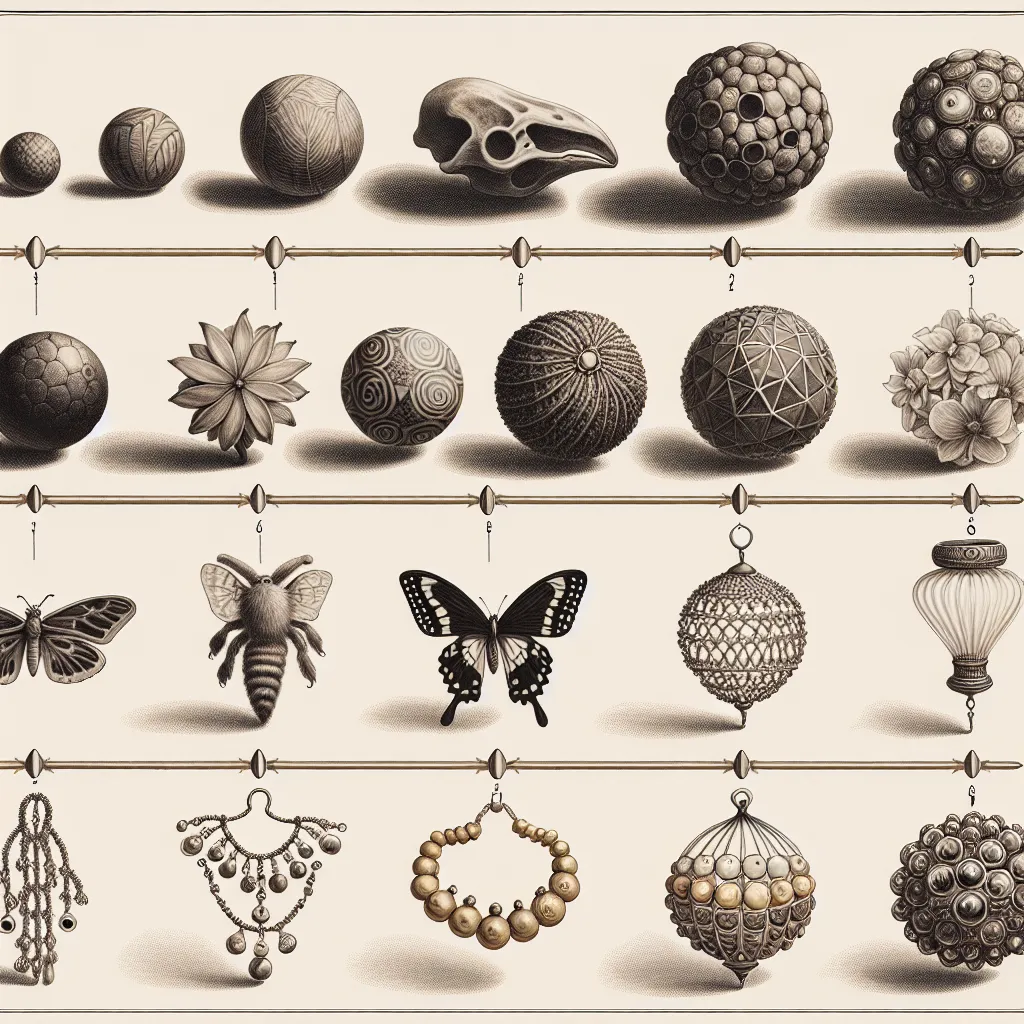– The Origins of Baubles in Ancient Cultures
The history of baubles dates back to ancient cultures, where decorative ornaments were used to symbolize various aspects of life and spirituality. The origins of baubles can be traced to different ancient civilizations across the globe, each with its own unique significance and symbolism.
In ancient Egypt, for example, baubles were often crafted with colorful beads and precious stones, and were believed to bring good luck and protection to the wearer. These ornate ornaments were also used in religious ceremonies and were buried with the deceased as a symbol of prosperity and eternal life.
Similarly, in ancient China, baubles were intricately designed and made from materials such as jade, a stone highly valued for its beauty and symbolism. These baubles were often worn as symbols of social status and wealth, and were also believed to ward off evil spirits and bring harmony and balance to the wearer’s life.
In India, baubles were an integral part of traditional attire and were adorned with symbols of spirituality and auspicious motifs. Made from a variety of materials including gold, silver, and gemstones, these ornaments were worn during religious rituals and festive celebrations to invoke blessings and prosperity.
Across the ancient Mediterranean civilizations, including the Greeks and Romans, baubles were commonly used as decorative elements in architecture, pottery, and jewelry. These ornamental pieces often featured intricate designs inspired by nature, mythology, and religious beliefs, reflecting the cultural and artistic expressions of the time.
The history of baubles in ancient cultures demonstrates their significance as symbols of spirituality, protection, and cultural identity. These early traditions laid the foundation for the use of baubles in modern times, where they continue to be cherished as decorative ornaments with deep historical and cultural roots.
– The Evolution of Baubles in Medieval Europe
During the medieval period, baubles underwent a fascinating evolution in Europe. Initially, baubles were simple trinkets made of wood, metal, or glass, and were primarily used as decorative ornaments. However, as trade routes expanded and cultural exchanges flourished, baubles began to reflect the diverse influences of different regions.
One significant development was the introduction of gemstones and precious metals into bauble craftsmanship. Wealthy nobles adorned themselves with elaborate baubles encrusted with rubies, sapphires, and emeralds, showcasing their status and opulence. The intricate designs of these baubles were often inspired by religious motifs, reflecting the strong influence of the Church during this period.
The late medieval period also witnessed the rise of guilds and artisan communities, leading to the production of more intricate and delicate baubles. Skilled craftsmen honed their techniques, creating exquisite filigree work and intricate engravings on baubles. These ornate pieces became prized possessions, often passed down through generations as family heirlooms.
Furthermore, the symbolism associated with baubles evolved during this time. Baubles were not merely seen as decorative items, but also as talismans and symbols of protection. This belief contributed to the incorporation of religious symbols and motifs into bauble designs, reflecting the spiritual and superstitious nature of medieval society.
In conclusion, the evolution of baubles in medieval Europe reflects the intricate interplay of cultural, religious, and artisanal influences. From simple ornaments to opulent symbols of wealth and faith, baubles underwent a remarkable transformation during this period, laying the foundation for their enduring appeal in modern times.
– Baubles in the Renaissance: Symbolism and Significance
In the Renaissance period, baubles held a symbolic and significant meaning that reflected the values and beliefs of the time. Baubles, also known as trinkets or knick-knacks, were intricately designed ornaments that adorned clothing, accessories, and even home decor. These decorative objects were not merely decorative, but were rich in symbolism, often representing wealth, status, and religious or cultural significance.
During the Renaissance, baubles were crafted with great attention to detail and were often adorned with precious gemstones, intricate metalwork, and vivid enamel. The use of specific symbols and motifs in the design of baubles conveyed underlying messages and narratives, serving as a form of non-verbal communication. For instance, a bauble adorned with a fleur-de-lis symbol might signify royalty, while one embellished with religious iconography could represent faith and devotion.
Furthermore, baubles in the Renaissance were also used as talismans and amulets, believed to possess magical or protective properties. These objects were often imbued with mystical significance, serving as a form of personal adornment as well as offering spiritual protection.
As the Renaissance was a period of immense creativity and innovation, baubles also became a platform for artistic expression. Skilled artisans and goldsmiths created elaborate baubles that showcased the technical prowess and aesthetic sensibilities of the era, contributing to the flourishing of the decorative arts.
The significance of baubles in the Renaissance era extended far beyond mere decoration, encompassing intricate symbolism, cultural expression, and the embodiment of spiritual beliefs. These ornate objects encapsulated the ethos of the time, reflecting the values and aspirations of society during this transformative period in history.
– Modern Trends in Bauble Design and Use
Modern trends in bauble design and use have evolved significantly in recent years, reflecting changes in fashion, technology, and consumer preferences. One notable trend is the shift towards sustainable and eco-friendly materials in bauble design. With growing awareness of environmental issues, many designers are opting for recycled metals, ethically sourced gemstones, and other environmentally conscious materials to create their baubles.
Another prominent trend is the incorporation of technology into bauble design. Smart baubles, equipped with features like fitness tracking, notifications, and even contactless payment capabilities, are gaining popularity among tech-savvy consumers. These innovative baubles seamlessly blend fashion with functionality, catering to the modern lifestyle of convenience and connectivity.
Furthermore, personalized and customizable baubles have become a prevailing trend, allowing individuals to express their unique style and individuality. From engraved pendants to customizable birthstone rings, these personalized baubles hold sentimental value and resonate with the growing demand for personalized fashion accessories.
Collaborations between designers and influencers have also shaped contemporary bauble trends, with social media playing a pivotal role in driving consumer preferences. Endorsements and collaborations with influencers have propelled certain bauble styles into the limelight, influencing consumer tastes and preferences.
In conclusion, modern trends in bauble design and use reflect a dynamic interplay of sustainability, technology, personalization, and influencer culture. As consumer preferences and societal values continue to evolve, the landscape of bauble design is poised to undergo further transformations, catering to an ever-changing market.

